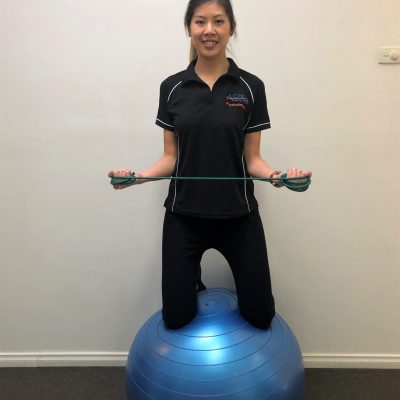Parkinson’s disease is a progressive neurological condition that primarily affects the substantia nigra region of the brain that produces dopamine. Dopamine is a vital chemical for regulating the body’s movement. Parkinson’s is a complex disease affecting 100,000 Australians.
Many people become less active as their disease progresses which can reduce their physical capacity and impact their quality of life. Physiotherapy can help manage symptoms of Parkinson’s disease and improve physical activity that otherwise may limit day-to-day activities.
Signs and symptoms of Parkinson’s disease
Parkinson’s disease is characterised by movement impairment with sign and symptoms changing as the disease progresses.
- tremor at rest
- hyposmia – reduced sense of smell
- difficulty in writing neatly
- postural instability
- slowness of movement
- involuntary movement
- rigid muscles
- reduced speed and initiation of movement
- anxiety
Symptoms result in muscle weakness, altered gait, reduced physical capacity and increased risk of falls.
Gait pattern of Parkinson’s disease:
Bradykinesia – characterised by slow movement and difficulties in altering body posture.
Shuffling gait – reduce stride length and dragging of the feet
‘Freezing’ of gait – inability of initiating a step to walk or get up out of a chair
Physiotherapy for Parkinson’s disease
Physiotherapy is essential for helping patients with Parkinson’s disease to achieve a better quality of life. Regular exercise has been shown to delay the start and the progression of Parkinson’s disease. Starting an exercise program with a physiotherapist and finding activities that are enjoyable is helpful.
Initially, physiotherapists will assess strength, balance, and function. As the disease is progressive in nature, treatment will vary depending on the stage of the disease and individual symptoms. Parkinson’s disease presents not just physical but also mental challenges for clients as there is no timeframe or cure for the disease.
Physiotherapy aims to target strength, flexibility, coordination, control and confidence. In addition, keeping clients, happy, mobile and safe is our priority. Tailored treatment plays an important role in fall prevention, focusing on strength, endurance and balance.
Benefits of physiotherapy for Parkinson’s disease:
- Improved muscle strength
- Enhanced balance and proprioception
- Improved gait pattern
- Reduced stiffness
- Improved cognitive function
- Reduced risk of falls
- Maintained cardiovascular health
- Maintained physical activity
- Improved quality of life
Treatment stragtegies
- Strength and dexterity exercises – to maintain overall strength and ability to manipulate small objects.
- Stretching – to reduce muscle rigidity.
- Cardiovascular training – gym sessions, walking, boxing and dancing to improve fitness.
- Gait training – to maintain safe walking pattern.
- Balance training – to reduce the increased risk of falls.
- Functional activities – practicing specific aspects of walking, getting out of a chair, rolling in bed to maintain activities of daily life.
- Education and self-management advice – using special cues to improve mobility.
Our physiotherapists can help in setting specific goals based on symptoms and stage of disease.
By applying the latest research findings and clinical reasoning, we can design a tailored exercise program and functional routines to improve independence and achieve client’s goals.
See Choose Physio for Parkinson’s Disease for more information from the Australian Physiotherapy Association





